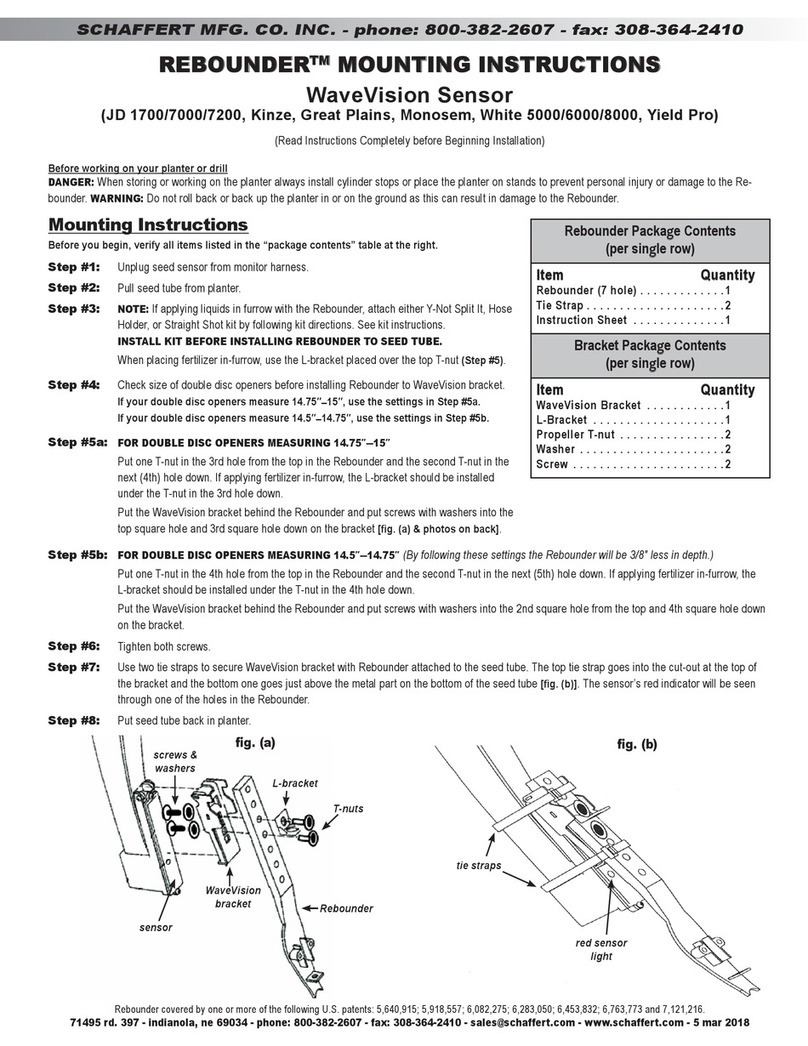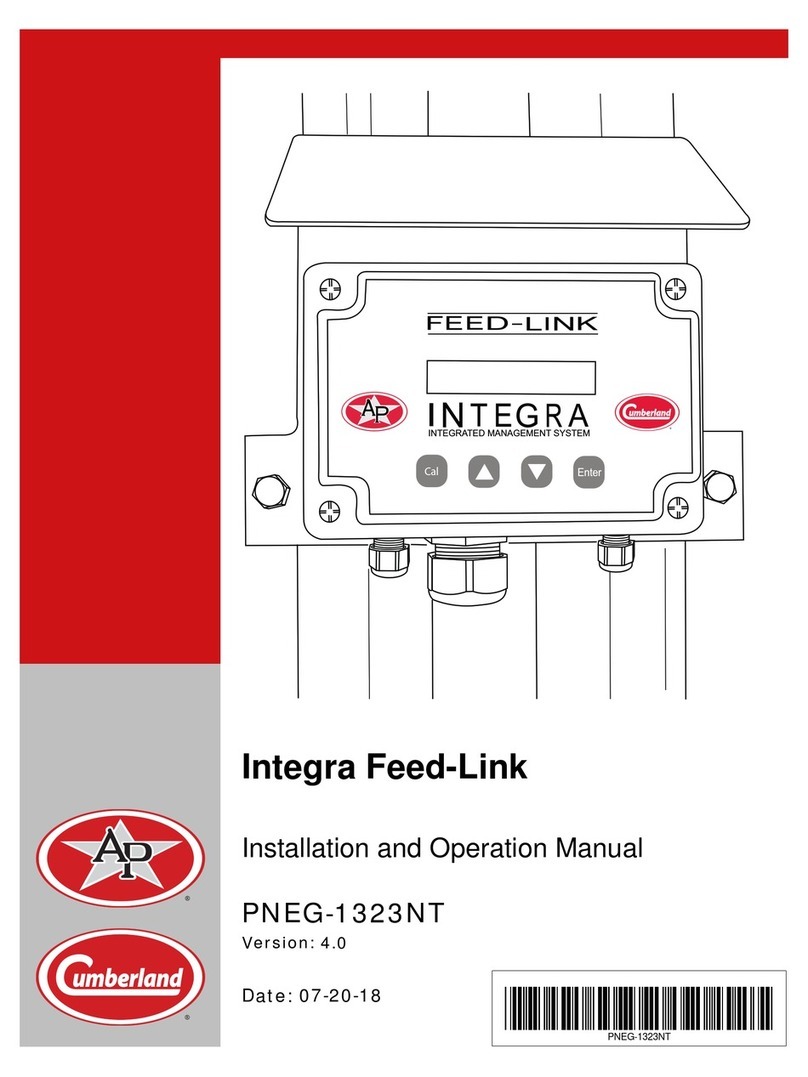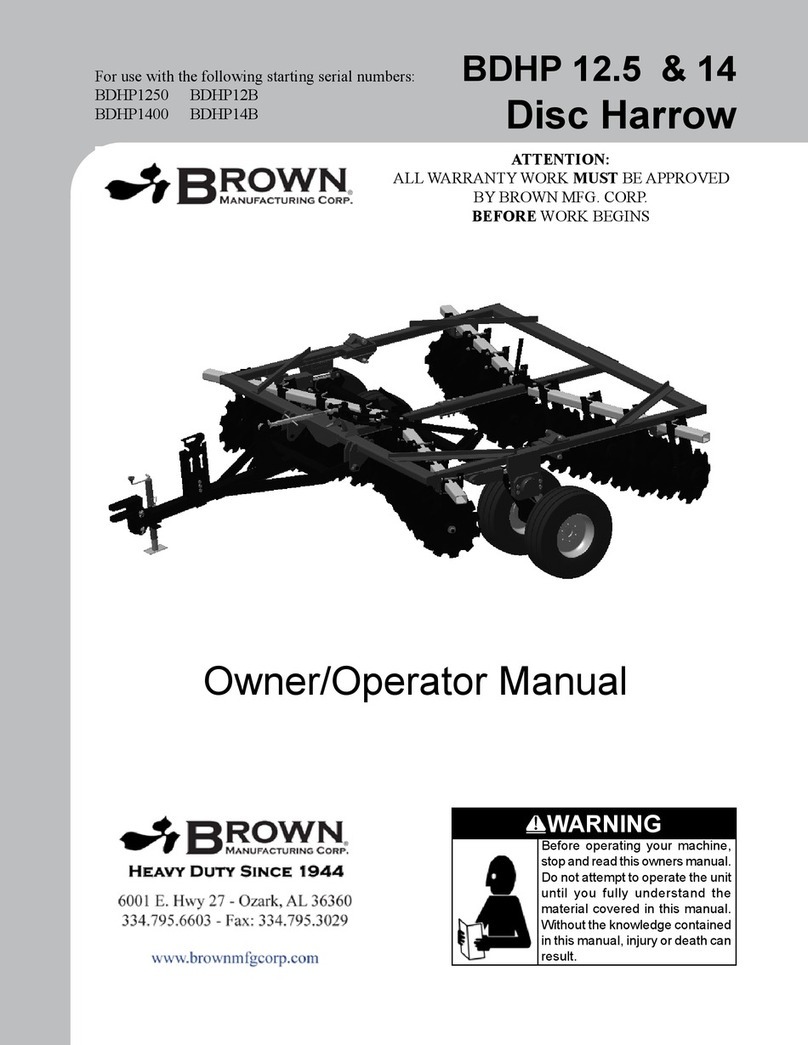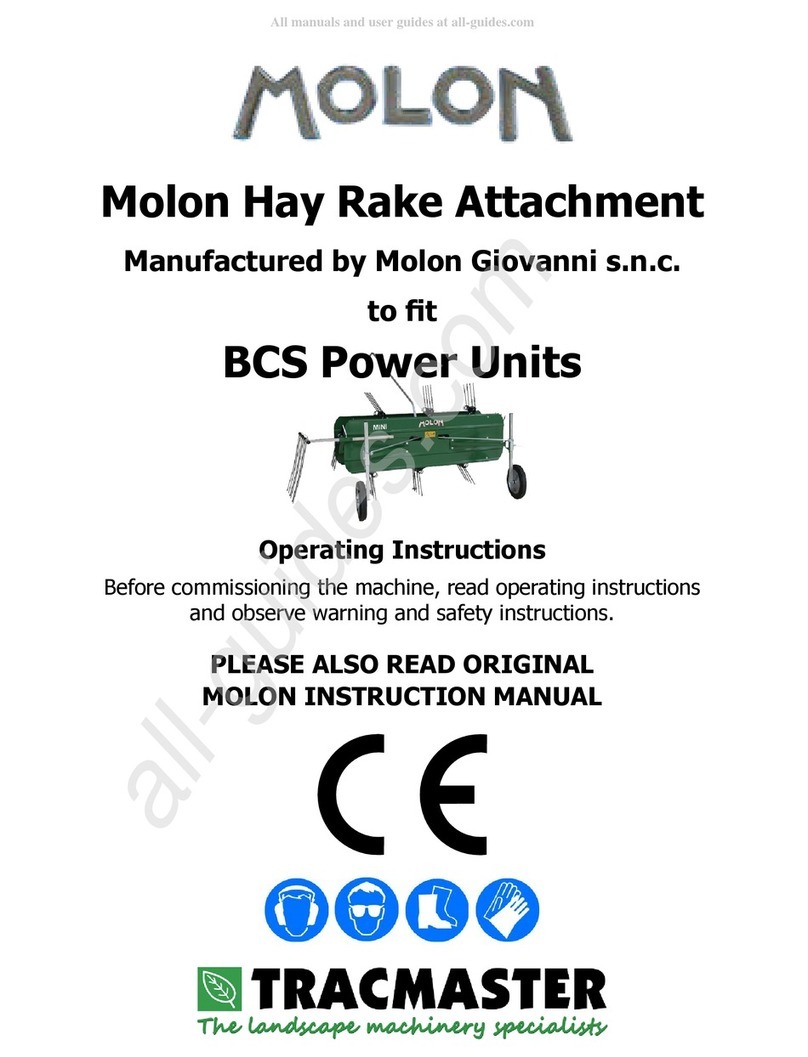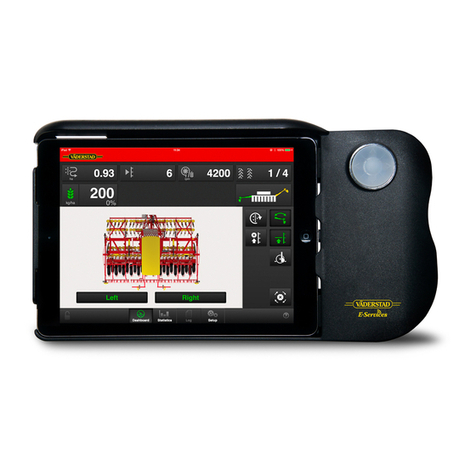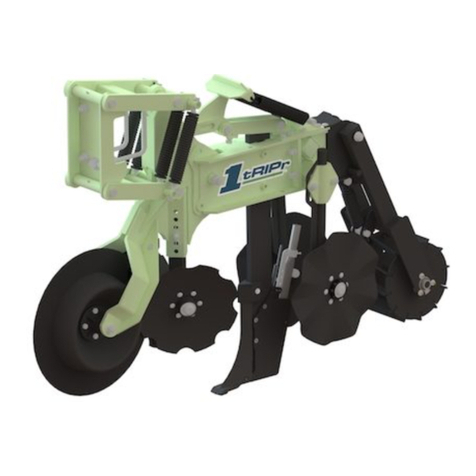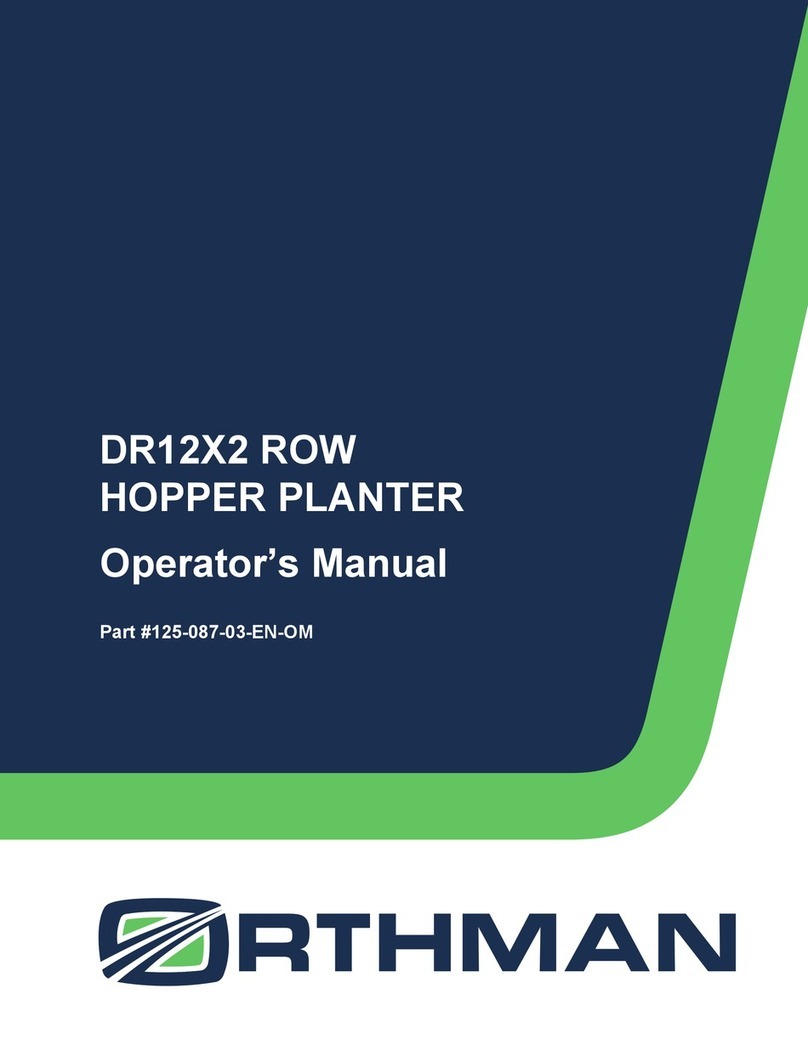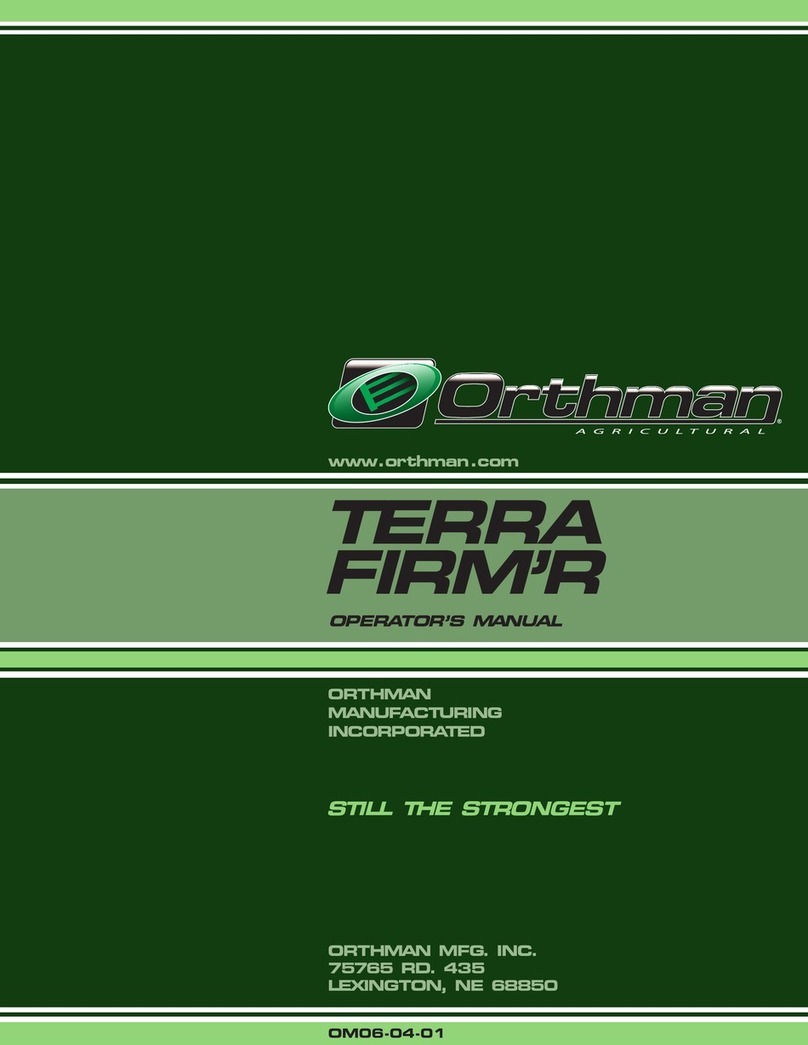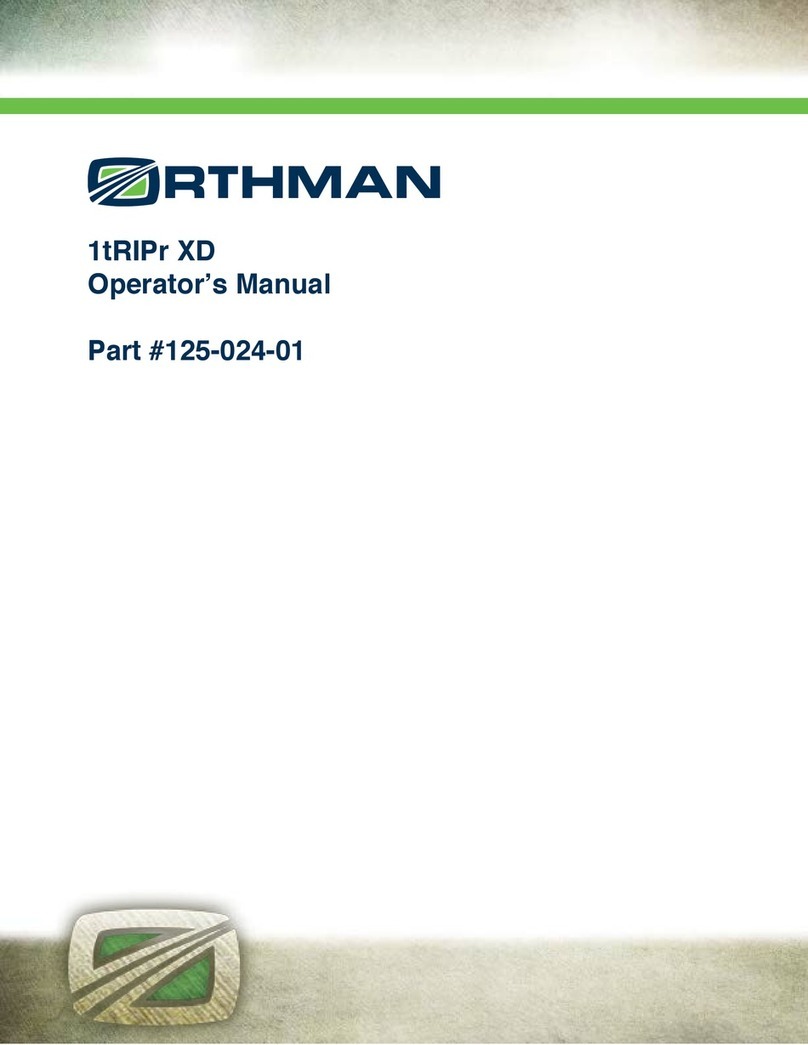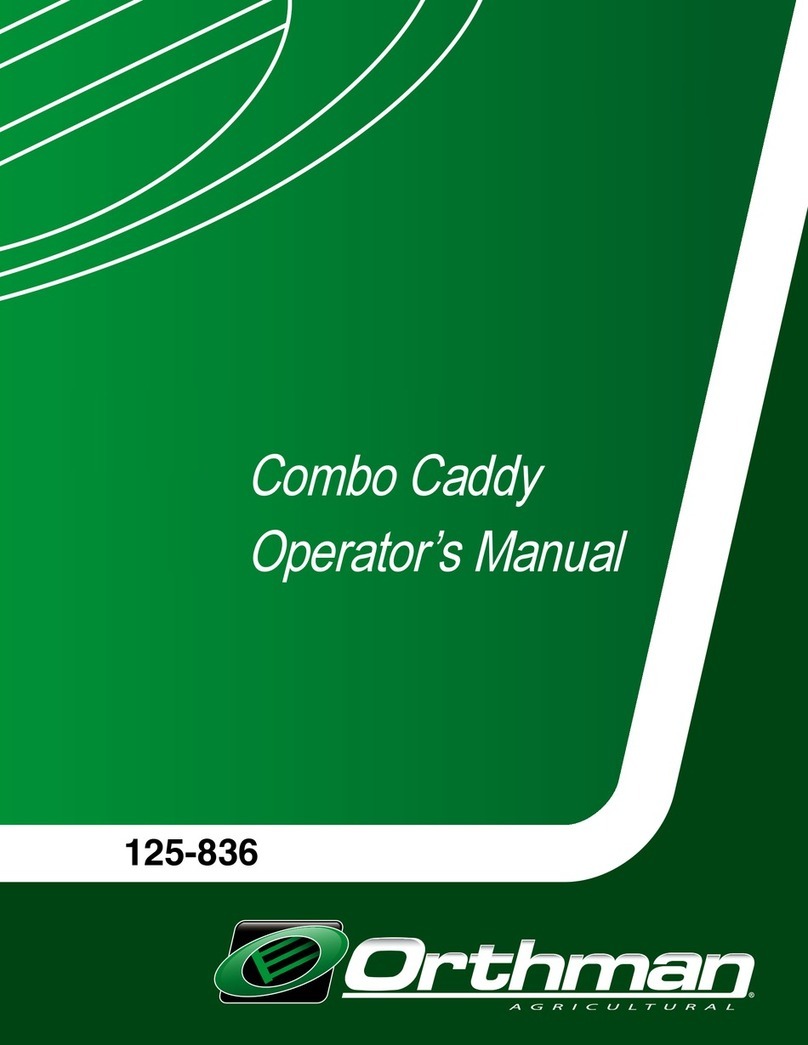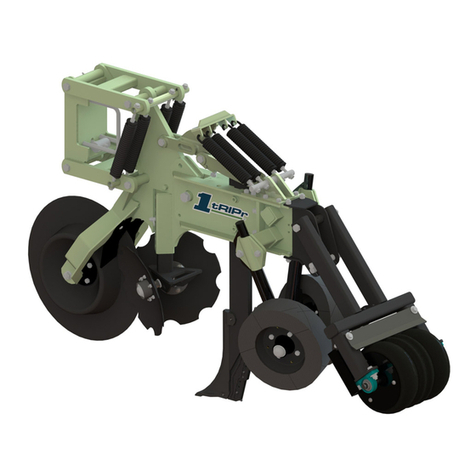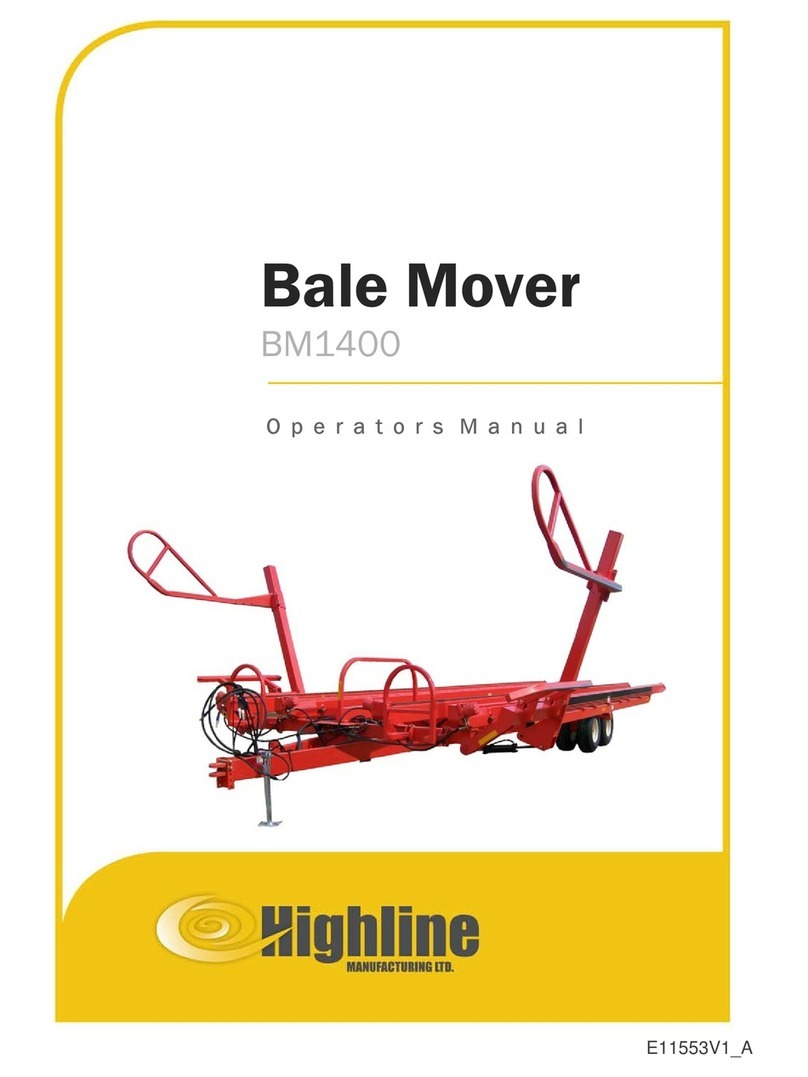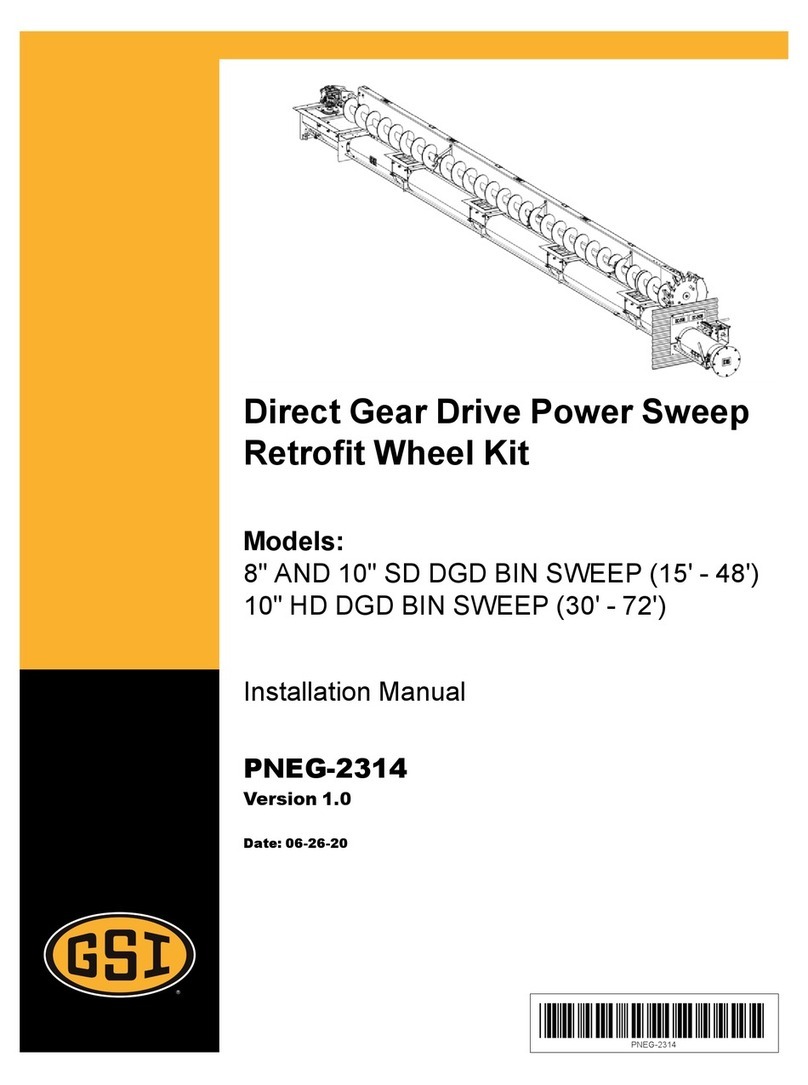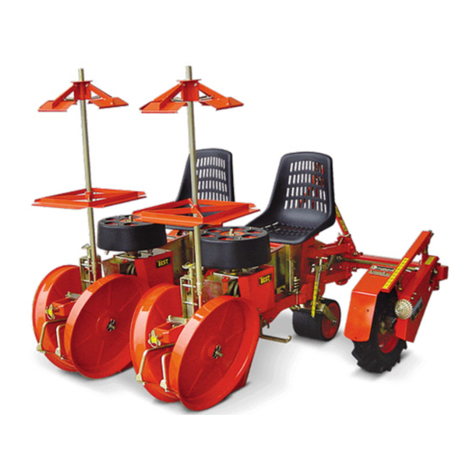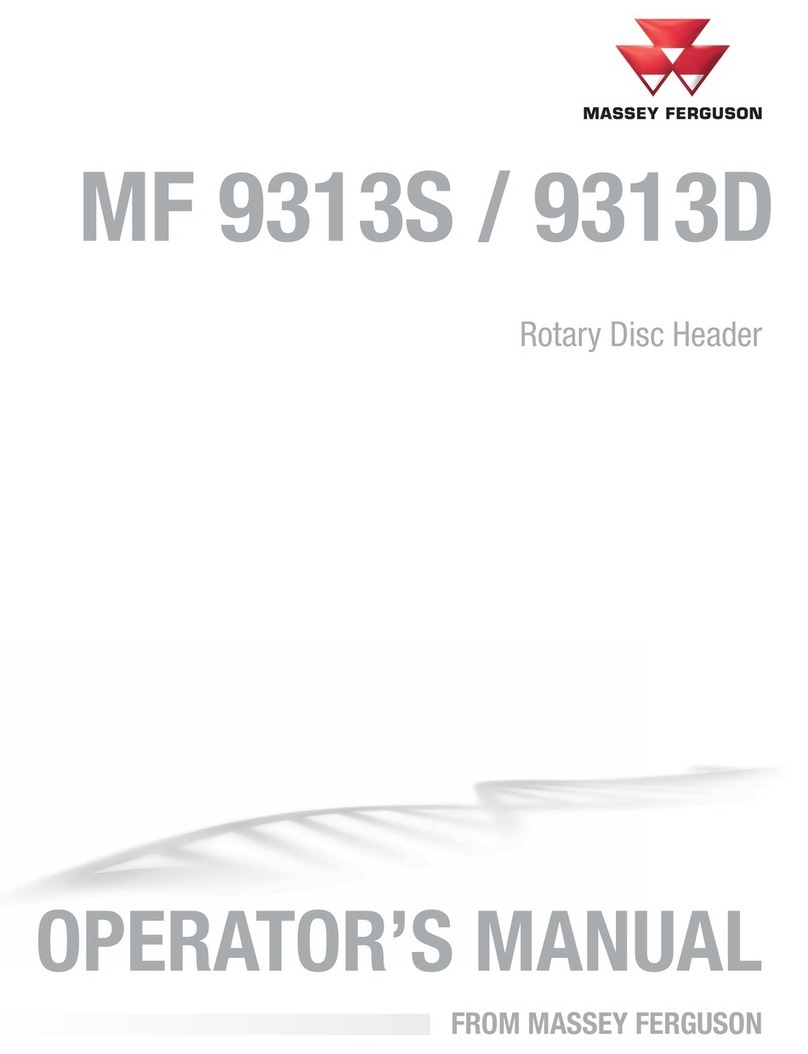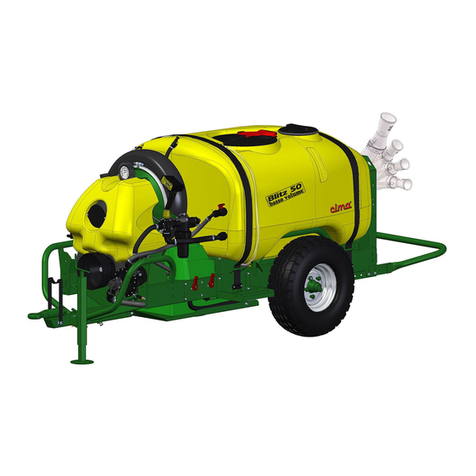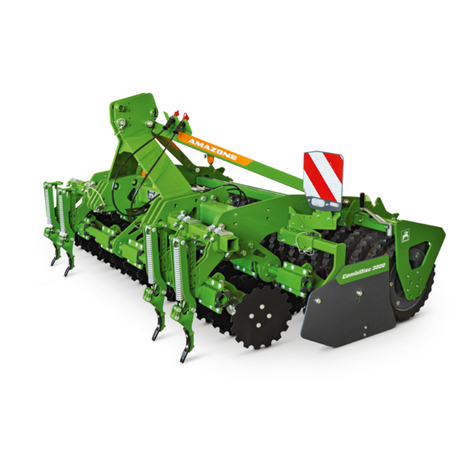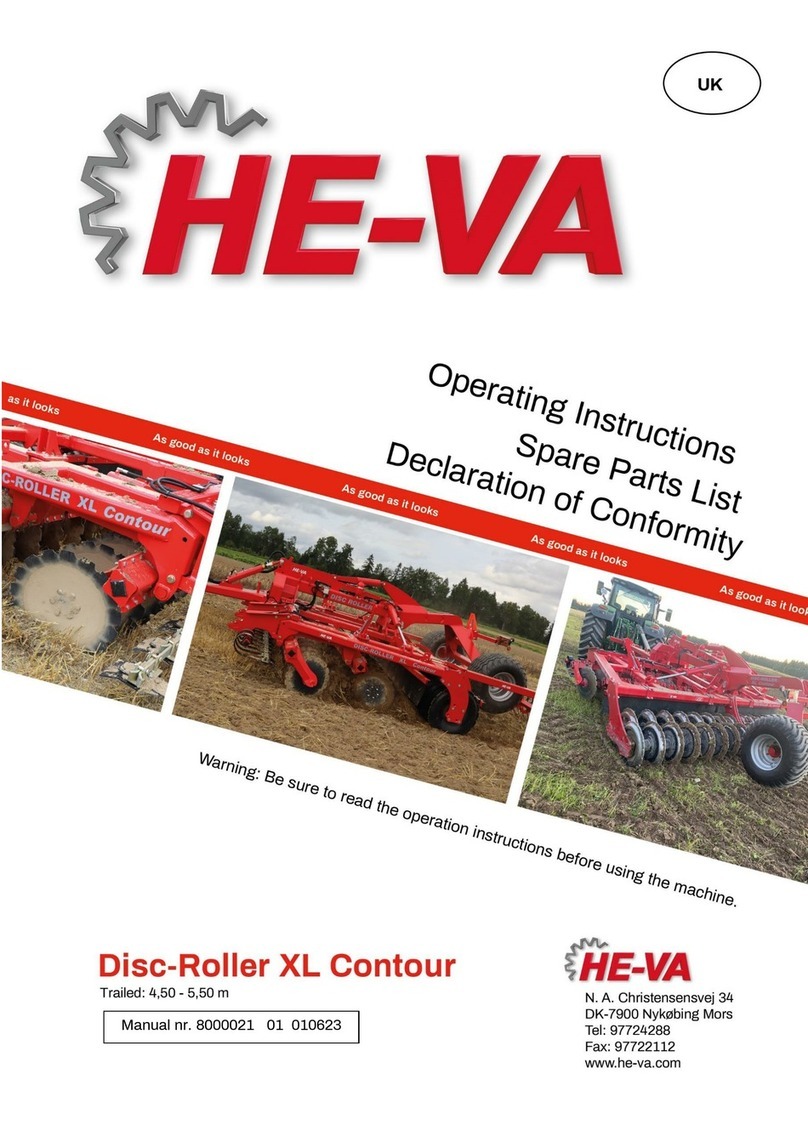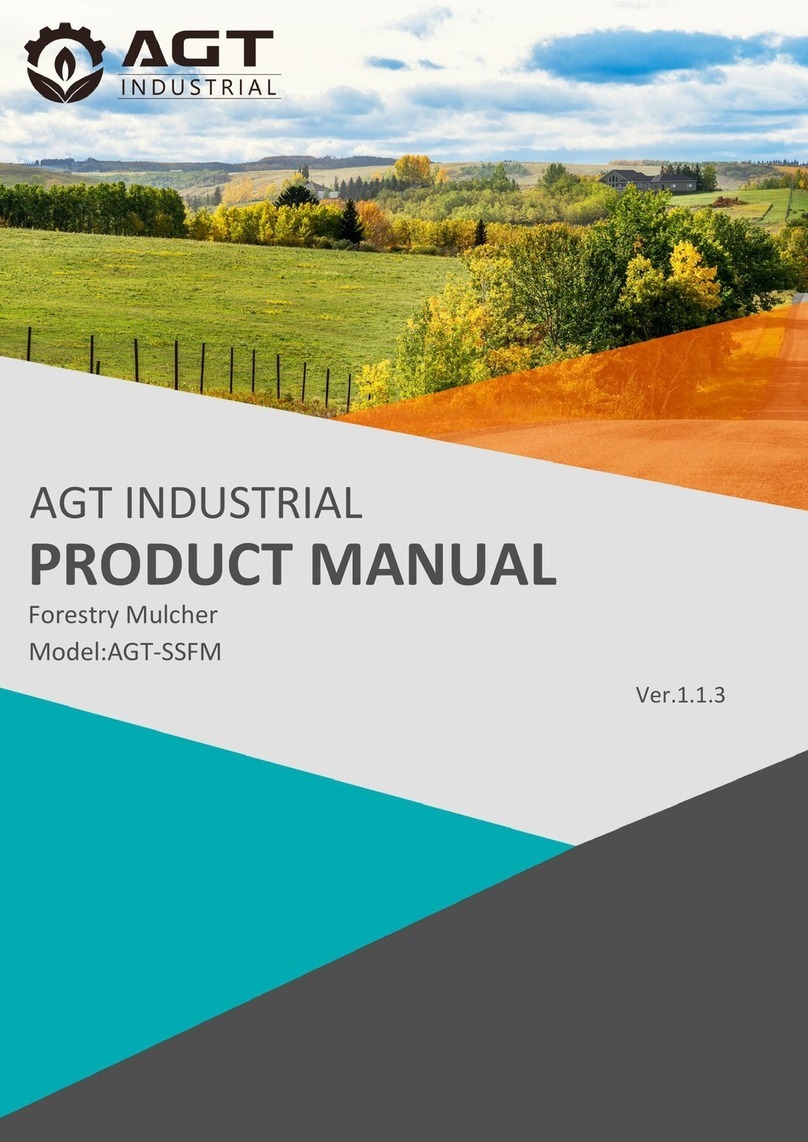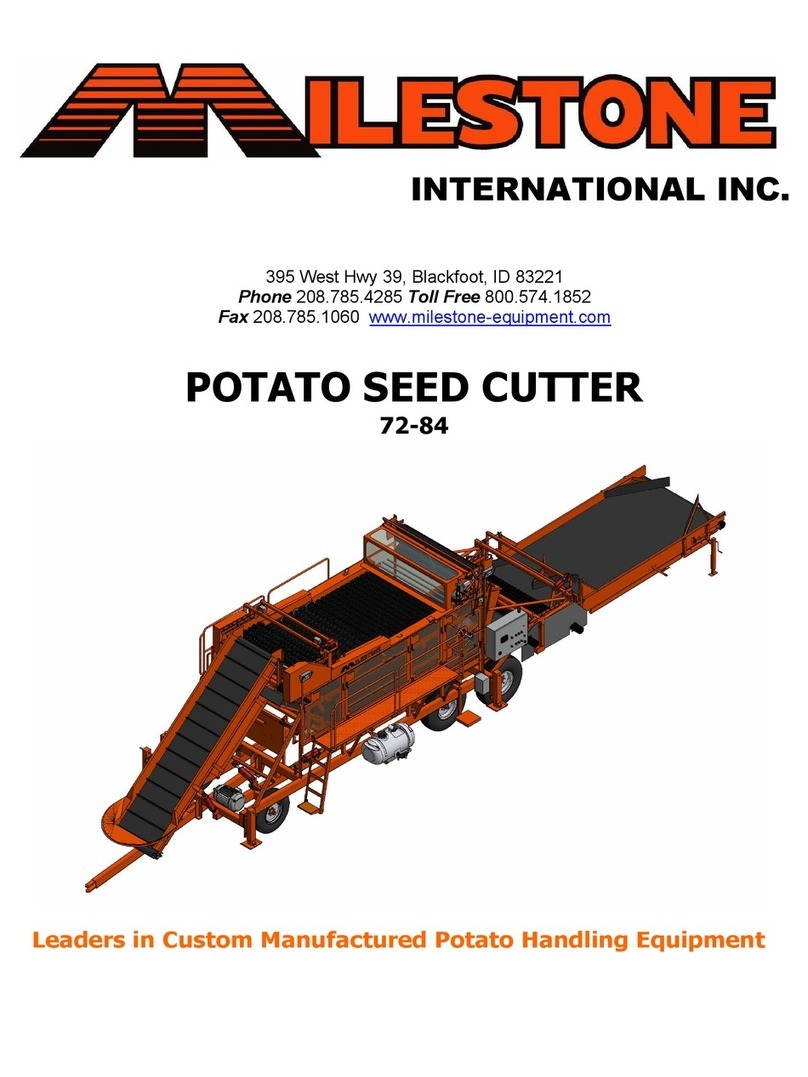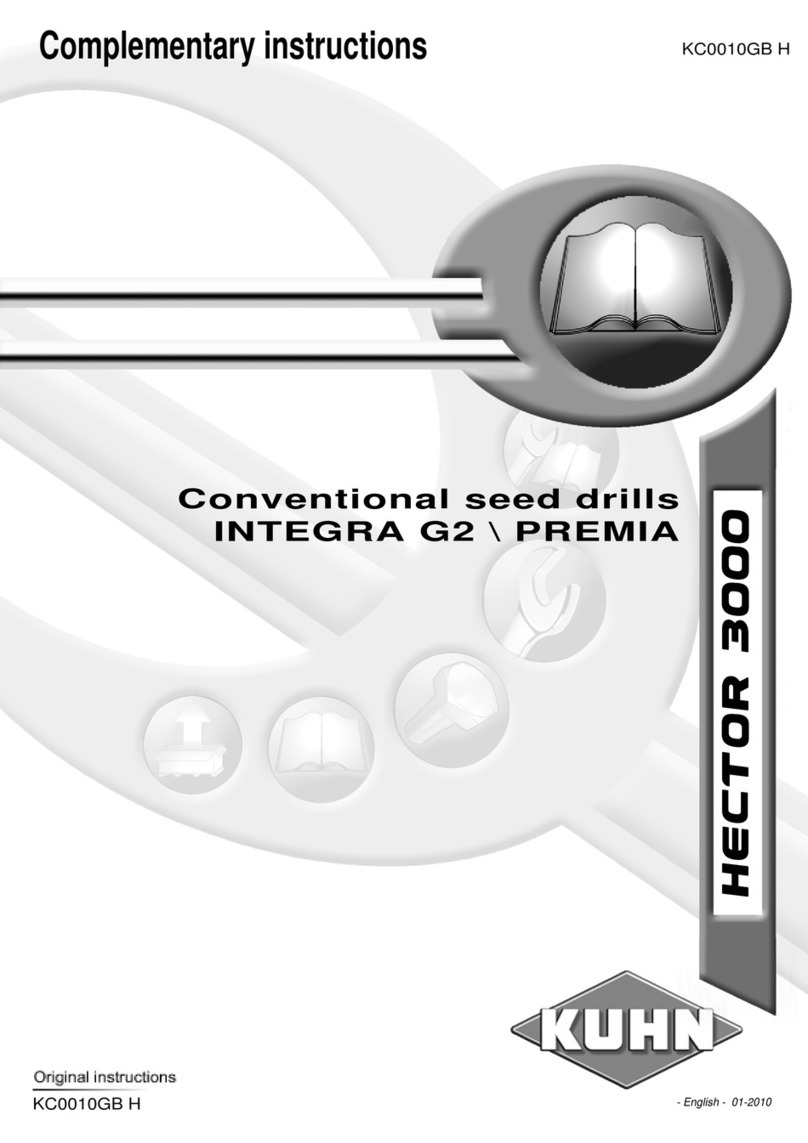
INTRODUCTION
1975 Toolbar OM-EN
1-4
Warranty
Orthman Manufacturing, Inc. ("OMI") warrants each new
whole good product to be free from defects in
manufactured components and workmanship. This
warranty is applicable only for the normal service life
expectancy of the product or components, not to exceed
twenty-four (24) consecutive months from date of
purchase of the new OMI product to the original
purchaser.
Purchased components installed by OMI (blades,
bearings, controls, hoses, wheels, coulters, cylinders,
fittings, points, etc.) shall be warranted by their
respective manufacturer for a period of twelve (12)
consecutive months from date of purchase of the new
OMI product to the original purchaser.
A completed online Warranty Registration for the original
purchaser must have been received by OMI to activate
warranty coverage. Non receipt of warranty registration
may void OMI warranty coverage. OMI warranty is
non-transferable.
Genuine OMI replacement parts and components will be
warranted for ninety (90) days from date of purchase or
the remainder of the original equipment warranty period;
whichever is greater.
All warranty work is to be performed by an authorized
OMI dealer at the repairing dealer’s location unless
otherwise approved by Orthman Manufacturing, Inc. –
Lexington, Nebraska.
Under no circumstances shall warranty cover any
merchandise or component thereof, which, in the opinion
of OMI, has been subjected to misuse, unauthorized
modifications or alteration, accident, collision with
obstruction/ground, or if repairs have been made with
parts other than those approved by OMI. If the seal on
the cylinder is broke (cylinder opened), it will void all
warranty for cylinder.
OMI warranty policies do not cover travel expenses, after
hours field/service time, overnight expenses, or
expenses not related to that of regular shop labor rates or
parts replaced during actual warranty repair. OMI
reserves the right to adjust warranty labor credits so as
not to exceed believed normal repair times as directed by
warranty governing laws.
OMI obligation under this warranty shall be limited to
repairing or replacing, free of charge to the purchaser,
any part, in our judgment, showing evidence of such
defect, provided further that such part shall be returned
within thirty (30) days from the date of repair to OMI
through the dealer or distributor from whom the product
was purchased or repaired; transportation charges
prepaid.
This warranty shall not be interpreted to render OMI
liable for injury or damages of any kind or nature to
person or property. This warranty does not extend to the
loss of crops, loss of delay in harvesting/planting, or any
expense or loss incurred for labor, substitute machinery,
rental, or any subsequent reasons thereof.
Except as set forth above, OMI shall have no obligation
or liability of any kind on account of its equipment and
shall not be liable for special or consequential damages.
OMI makes no other warranty, expressed or implied, and,
specifically, OMI disclaims any implied warranty or
merchantability or fitness for a particular purpose. Some
sates or provinces do not permit limitations or exclusions
of implied warranties or incidental or consequential
damages, so the limitations or exclusion in this warranty
may not apply.
This warranty is subject to any existing conditions of
supply, which may directly affect OMI ability to obtain
materials or manufacture replacement parts.
OMI reserves the right to make improvements in design
or changes in specifications at any time, without incurring
any obligation to owners of units previously sold.
No one person is authorized to alter, modify or enlarge
this warranty nor the exclusions, limitations and
reservations. For more information, please visit OMI
website www.orthman.com.
Information subject to change without notice.
Provided warranty policy information supersedes all
previous warranty considerations.
Orthman Manufacturing, Inc. – Lexington, NE
Rev. Date - 8/1/2021
